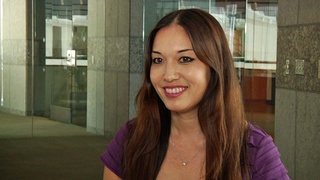Interviews
Defusing myths through The Hapa Project
It allows people to, hopefully, defuse some myths that may be about them. I think there’s these myths of “hybrid vigor” and “All you Hapas, you’re all beautiful, y’all have it going on, and everything’s great, and look at all the models out there and all the actors, and oh, man, Keanu Reeves is so good-looking.” Hopefully it defuses some of that because there’s a whole gamut of ages and ethnicities and physical statures—people look really, really different.
At the same time, I think it allows people to construct their identity and tries to show how different—I wanted to celebrate difference in it, I wanted to reclaim these terms that haven’t been very positive—Ainoko, or “hybrid” or “half-breed” or even “Amerasian” which is technically correct. It’s still got this kind of ‘75-post-Vietnam thing because that’s where it’s connotated, that’s where the documentaries are. And even “Hapa” being originally a semi-derogatory term in Hawai`i. I wanted people to be able to say who they were in their own words and reclaim these things and have a place where we could actually celebrate our differences.
Date: May 3, 2006
Location: California, US
Interviewer: Jim Bower
Contributed by: Watase Media Arts Center, Japanese American National Museum.
Explore More Videos

Pop and Balls
(1938-2020) Japanese American attorney and civil rights activist

Re-examining Identity
(1941-2018) Japanese Canadian photojournalist and activist

Fitting in to both sides of her family
Jewish Japanese American journalist


Culture is an important part of one's identity
Jewish Japanese American journalist



Conflicted about immigrating to America (Japanese)
(b. 1925) War bride

Defining "Nikkei"
(1941-2018) Japanese Canadian photojournalist and activist

Unique Identity from Having Multiple Backgrounds
(b. 1938) Philipines-born hikiagesha who later migrated to the United States.

Growing up Japanese in Hawaii
(b. 1952) Former banking executive, born in Hawaii



Parents identification as Peruvian Okinawan
Okinawan American whose parents are from Peru.

Okinawan cultural appreciation
Okinawan American whose parents are from Peru.
